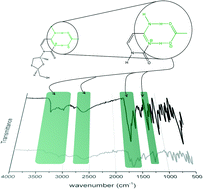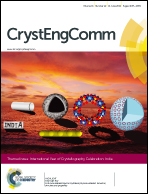Synthon transferability probed with IR spectroscopy: cytosine salts as models for salts of lamivudine†
Abstract
Co-crystal screening of the anti-HIV drug lamivudine was carried out with dicarboxylic acids as co-formers, and three of the resulting crystalline solids, two salts and a co-crystal, were studied with SCXRD, PXRD and FTIR spectroscopy. Salts of cytosine, a molecule that incorporates critical structural features of lamivudine, with the same co-formers, were taken as model systems for IR spectroscopic studies of the synthons in the salts of lamivudine. It is shown that different systems with the same synthon show very similar spectral signatures in the regions corresponding to the synthon absorptions. This reveals again the modular nature of the supramolecular synthon.

- This article is part of the themed collection: International Year of Crystallography Celebration: India

 Please wait while we load your content...
Please wait while we load your content...